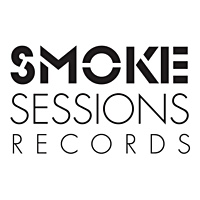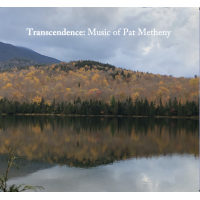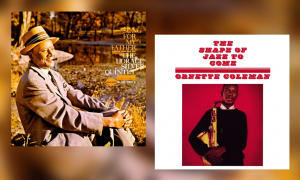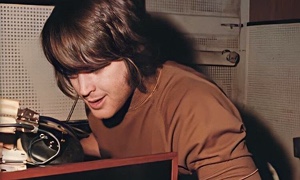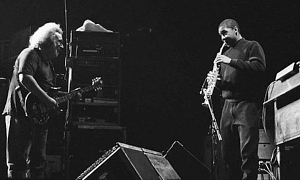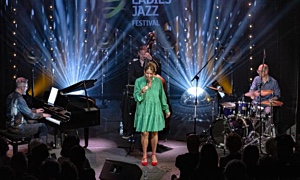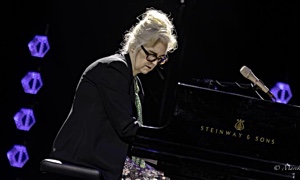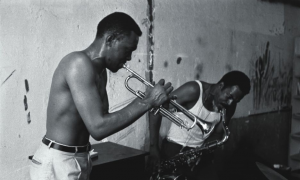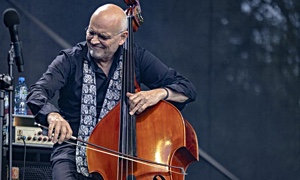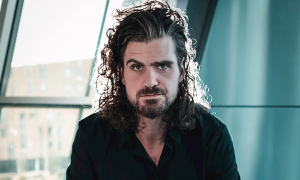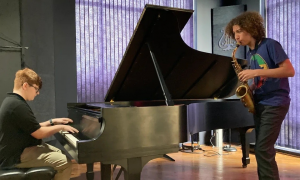Home » Jazz Articles » Building a Jazz Library » Stan Getz
Stan Getz

Stan Getz
saxophone, tenor1927 - 1991

Lester Young
saxophone1909 - 1959
Getz had a long and remarkably successful career, stretching from the very early 1950s to 1991, the year he died. After honing his skills with the

Stan Kenton
piano1911 - 1979

Woody Herman
band / ensemble / orchestra1913 - 1987
Stan Getz was a restless artist. His music changed and changed and changed again over the years, until, near the end of his life, he came nearly full circle. T.S. Eliot described this kind of personal journey in his "Four Quartets": "We shall not cease from exploration, and the end of all our exploring will be to arrive where we started and know the place for the first time." He could have been describing the arc of Getz's career.
Getz's early recordings, largely from the 1950s, are lyrical, beautifully simple. They're mainly improvisations on jazz standards, in which he concentrates on melody, on weaving countless variants on familiar themes. There's a lightness, a gentleness, even in the up-tempo numbers. The rhythm section is supportive but discrete, never intrusive.
In the early 1960's, Getz became a leading light in the bossa nova movement, a blending of American jazz with Brazilian rhythms and sensibilities. His bossa nova albums were immensely popular "crossover" hits (huge sales, two gold discs, four Grammys), but that doesn't detract from the artistic value of these recordings. Getz seems truly inspired by these Brazilian composers and musicians, and they bring out in him an open display of passion that's antithetical to "cool." Depending on where your own passions lie, you may find the best of the bossa nova albums among the best of Getz's career.
In the post-bossa nova period, Getz's playing took on a somewhat harder edge—no longer unrelievedly mellow, with less reliance on melodic improvisation, more on pyrotechnical display. He tried other jazz genres, including jazz-rock fusion, and played with like-minded musicians who encouraged his experimentation. This seems to have been a restless period for Getz. After two decades of recording and performing, was he worried about being considered a dinosaur of the cool jazz era? In an effort to stay current, was he incorporating the aggressive musical approach of

John Coltrane
saxophone1926 - 1967
Whatever might have driven him to the avant-garde, Getz eventually returned to playing straight-ahead jazz, with straight-ahead rhythm sections. Most importantly, he came back to his original focus on melody, which had been the core of his identity as a musician. His final recordings had a heartbreaking simplicity, as though he were saying, "This is how it should have been all along."
Stan Getz recorded over 150 albums in a span of four decades. In roughly chronological order, here are ten to explore.
 Stan Getz Quartets
Stan Getz QuartetsOriginal Jazz Classics, 1950
In this album of mainly jazz standards, recorded in 1949 and 1950, the 22 year old Getz demonstrates the light approach and velvety tone that he would return to for the rest of his career. But there's more than just that special Getz sound on display here. In some of these tracks, Getz shows that he's already a master improviser, creating new melodic lines on the fly and sustaining the inventiveness for chorus after chorus. In "What's New?," he manages to stay fresh for six consecutive choruses, with no break for a piano solo. In "You Stepped Out of a Dream," played in a very high register, Getz's tone is almost wispy, as though he's barely breathing into the horn. Some will hear quiet introspection in this piece, while others will hear musical doodling. "Long Island Sound" finds Getz in a stronger mood, playing decisively in mid-register and improvising nicely on a tune that seems to be a first cousin to "Zing Go the Strings of My Heart." He brings the same satisfying approach to "Mar-CIA," which sounds very much like "When Your Lover Has Gone."
 Stan Getz Plays
Stan Getz Plays Verve Records, 1954
Getz goes to work on more jazz standards in this collection, recorded in 1952 and 1954. Whether the difference lies in the original recordings or the remastering, the sound quality here is noticeably better than in the Stan Getz Quartets recordings. Getz also seems more in control during these sessions, more focused. Although light as ever, his attack is strong and confident, as in "Time on My Hands," where he begins to improvise in the first few bars and continues effortlessly throughout. He takes "How Deep is the Ocean" at the same medium pace, improvising easily and beautifully. "'Tis Autumn" gives us a full dose of Getz's unique tone, warm and buttery. He plays this one just as written, and that's more than enough. For a slow ballad with more improvisation, listen to "Body and Soul," in which he gives us chorus after chorus of inventiveness. Less satisfying is another slow one, "These Foolish Things," in which the improvisation is mainly musical embroidery. Although "Lover Come Back to Me" is taken at a gallop, Getz's playing is precise, his improvisations logical. He's not just blowing a fusillade of notes, he's telling a story. But he does even better with the medium-fast tempo of "With the Wind and the Rain in Your Hair," which gives him the perfect backdrop to spin more gorgeous stories.
 Stan Getz and the Oscar Peterson Trio
Stan Getz and the Oscar Peterson TrioVerve Records, 1957
In Getz's earlier albums, track length was restricted to about three minutes in order to accommodate the 78 rpm format. By 1957, when this set was recorded, the long-playing vinyl record had become standard in the jazz world, and this enabled Getz,

Oscar Peterson
piano1925 - 2007

Herb Ellis
guitar1921 - 2010

Ray Brown
bass, acoustic1926 - 2002
 Jazz Samba Encore!
Jazz Samba Encore!Verve Records, 1963
Getz seems absolutely inspired in this one, arguably the best of the half-dozen bossa nova albums he recorded in the early 1960s. The source of his inspiration may have been the compelling guitar work of

Luiz Bonfa
guitar, acoustic1922 - 2001
 Stan Getz with Guest Artist Laurindo Almeida
Stan Getz with Guest Artist Laurindo AlmeidaVerve Records, 1963
Without vocals or familiar songs, this album feels more like solid jazz than Getz's other bossa nova efforts, which may make it more appealing to some listeners. Guitarist

Laurindo Almeida
guitar1917 - 1995
 Bob Brookmeyer and Friends
Bob Brookmeyer and FriendsSony (Columbia) Records, 1965
Recorded in 1963, just as the bossa nova wave was receding, this collaboration between Getz and valve trombonist

Bob Brookmeyer
trombone1929 - 2011

Tony Bennett
vocals1926 - 2023
 Getz au Go Go
Getz au Go GoVerve Records, 1964
Recorded in 1964 with vocalist

Astrud Gilberto
vocals1940 - 2023

Gary Burton
vibraphoneb.1943

Louis Armstrong
trumpet and vocals1901 - 1971

Bessie Smith
vocals1894 - 1937

Billie Holiday
vocals1915 - 1959

Bobby Hackett
trumpet1915 - 1976
 Spring is Here
Spring is HereConcord Jazz, 1981
It's been nearly two decades since the Brookmeyer recording, and the experimentation is over. Getz is back to playing straight-ahead jazz, as in this album, recorded live in 1981 at San Francisco's Keystone Korner, in which he is accompanied by just piano, bass, and drums. Think of it as the "Stan Getz Quartets" (above), but more assertive. "Sweet Lorraine" is a beautiful tune and Getz treats it with great respect, playing it as written for nearly two minutes, and returning to an almost straight version for his closing solo. In "I'm Old Fashioned," after a long, lovely opening by Levy, Getz delivers a relaxed, gently swinging solo—possibly his best on the disc. Getz opens "How About You" at a relaxed lope, blowing chorus after chorus of melodic invention—like the 1950s Getz, just less reticent. "Easy Living" was a Getz trademark for many years, and here he delivers it with his old, languid gentleness. Even his final solo is relatively hushed, and Levy follows suit throughout. Getz takes the same slow, sinuous approach to "You're Blasед," practically caressing each note as he plays the entire piece without interruption. Between "Easy" and "Blasед," there are almost 15 minutes of let's light the candles music on this disc.
 The Dolphin
The DolphinConcord Jazz, 1981
This is the companion album to "Spring is Here," taken from the same recording date. In "The Dolphin," the title tune, Getz proves he hasn't lost his gift for melodic invention, delivering a long, beautiful solo in which he's alternately insistent, tender and soaring in flight. There's plenty of room on this disc for pianist

Lou Levy
piano1928 - 2001
 People Time
People Time Verve Records, 1992
In these exquisite sessions, recorded live just a few months before he died, Getz has cast off the in-your-face tics he acquired in his middle years—the hard-edged tone, the pyrotechnical flights, the honking, those little three and four note repetitions squealed out for emphasis. Accompanied only by pianist

Kenny Barron
pianob.1943
There you have it, ten excellent Stan Getz discs to consider. If I were forced to choose just three, I'd grab Stan Getz and the Oscar Peterson Trio, Jazz Samba Encore and People Time. May they bring you joy.
Tags
Stan Getz
Building a Jazz Library
Mark Barnett
Lester Young
Stan Kenton
Woody Herman
John Coltrane
oscar peterson
Herb Ellis
Ray Brown
Luiz Bonfa
Laurindo Almeida
Bob Brookmeyer
Tony Bennett
Astrud Gilberto
Gary Burton
Louis Armstrong
Bessie Smith
Billie Holiday
Bobby Hackett
Lou Levy
Kenny Barron
Comments
PREVIOUS / NEXT
Support All About Jazz
 All About Jazz has been a pillar of jazz since 1995, championing it as an art form and, more importantly, supporting the musicians who make it. Our enduring commitment has made "AAJ" one of the most culturally important websites of its kind, read by hundreds of thousands of fans, musicians and industry figures every month.
All About Jazz has been a pillar of jazz since 1995, championing it as an art form and, more importantly, supporting the musicians who make it. Our enduring commitment has made "AAJ" one of the most culturally important websites of its kind, read by hundreds of thousands of fans, musicians and industry figures every month.



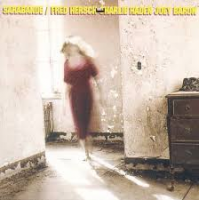

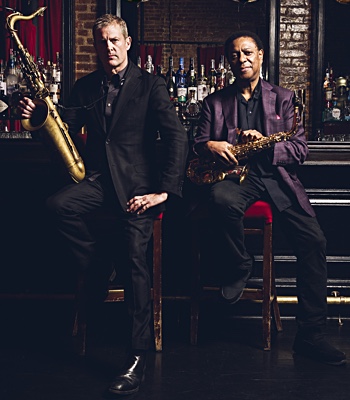
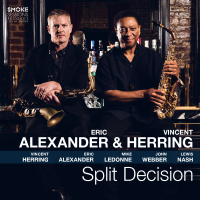

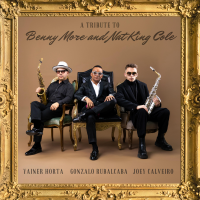 Buy Now
Buy Now
